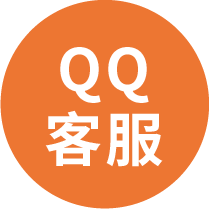cIAP1 (BIRC2) Rabbit Polyclonal Antibody
CN¥ 5,808.00
CN¥ 3,080.00
CN¥ 2,900.00
CN¥ 6,650.00
CN¥ 9,998.00
Specifications
| Product Data | |
| Applications | IF, IHC, WB |
| Recommend Dilution | WB: 1 - 4 ug/mL, ICC: 10 ug/mL, IF: 20 ug/mL |
| Reactivity | Human, Mouse |
| Host | Rabbit |
| Clonality | Polyclonal |
| Immunogen | c-IAP antibody was raised against a synthetic peptide corresponding to 14 amino acids at the C-terminus of human c-IAP1 c-IAP antibody detects both c-IAP1 and c-IAP2. |
| Formulation | PBS containing 0.02% sodium azide. |
| Concentration | 1ug/ul |
| Purification | Affinity chromatography purified via peptide column |
| Conjugation | Unconjugated |
| Storage Condition | Store at -20°C as received. |
| Gene Name | baculoviral IAP repeat containing 2 |
| Database Link | |
| Background | Apoptosis, or programmed cell death, is related to many diseases, such as cancer. Apoptosis is triggered by a variety of stimuli including members in the TNF family and can be prevented by the inhibitor of apoptosis (IAP) proteins. IAP proteins form a conserved gene family that binds to and inhibits cell death proteases (1 for review). The two isoforms of c-IAP (c-IAP1 and c-IAP2) are structurally related to XIAP, containing 3 baculoviral IAP repeat (BIR) motifs that are essential and sufficient for the binding and inhibition of caspases–3, –7, (2,3). The c-IAPs can associate with the death receptor TNF-R2, and mediate the ubiquitinization of TRAF2 following the binding of TNF-alpha by its receptor (2,4). Omi, a negative regulator of c-IAP, inhibits its activity by catalytically cleaving c-IAP (5). Another negative regulator, Smac/DIABLO, acts by enhancing the auto-ubiquitization activity of c-IAP (6). |
| Synonyms | API1; c-IAP1; cIAP1; Hiap-2; HIAP2; MIHB; RNF48 |
| Reference Data | |
| Protein Families | Druggable Genome |
| Protein Pathways | Apoptosis, Focal adhesion, NOD-like receptor signaling pathway, Pathways in cancer, Small cell lung cancer, Ubiquitin mediated proteolysis |
Documents
| Product Manuals |
| FAQs |
| SDS |
Resources
| 抗体相关资料 |


 United States
United States
 Germany
Germany
 Japan
Japan
 United Kingdom
United Kingdom
 China
China




